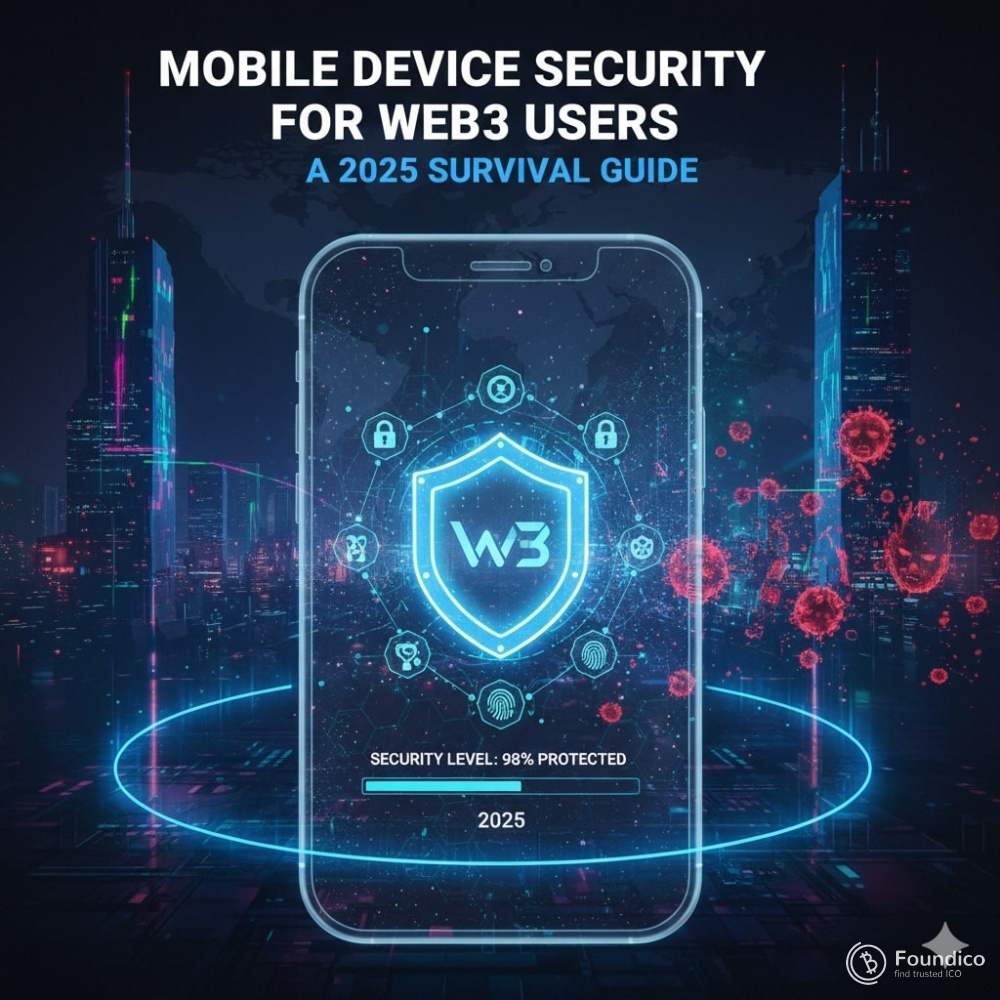Mobile Device Security for Web3 Users: A 2025 Survival Guide

By Dr. Pooyan Ghamari, Swiss Economist and Visionary
Web3 in 2025 is no longer a frontier—it’s the main street of finance, identity, and ownership. Your phone holds the keys to multi-million-dollar wallets, irreplaceable NFTs, and governance votes that shape entire ecosystems. But convenience comes at a cost: the same device you use to scroll memes is now the primary target for sophisticated attackers. One breach, one careless tap, and everything vanishes.
This is your field manual. No fluff. No citations. Just hard-won operational security for the decentralized age.
The Threat Landscape Has Evolved
Attackers aren’t guessing passwords anymore. They’re:
- Deploying AI-generated deepfake support calls that mimic your favorite protocol’s team.
- Using 5G electromagnetic side-channels to reconstruct PIN entries from power draw.
- Distributing “security update” APKs that silently approve unlimited spends.
- Running nation-state-level phishing farms with real-time wallet drain automation.
Your phone isn’t just a device. It’s a vault with a glass door.
Lock Down the Hardware
Choose devices with verifiable roots of trust:
- Google Pixel + GrapheneOS – Full verified boot, no Google telemetry.
- Apple iPhone (Secure Enclave) – Hardware isolation for keys.
- Fairphone + CalyxOS – Modular, repairable, privacy-first.
Immediate actions:
- Enable full-disk encryption.
- Disable USB data when locked (block juice jacking).
- Use a complex passphrase (12+ characters), not just biometrics.
- Set BIOS/firmware passwords where available.
Software: Trust No One
Run only patched, minimal OS builds. Stock carrier Android? Delete it. Flash GrapheneOS or DivestOS and verify every update hash.
App policy:
- No Google Play or App Store for Web3 tools. Use F-Droid, Aurora, or direct APK from verified GitHub releases.
- Sandbox everything. Use Shelter/Work Profile to isolate dApps.
- Zero trust permissions. Deny overlay, accessibility, and background location by default.
- Monitor traffic. NetGuard or RethinkDNS to block trackers and rogue domains.
Wallet Design: Compartmentalize Ruthlessly
Never keep >5% of your net worth on your daily driver.
Two-device architecture:
| Device | Purpose | Rules |
|---|---|---|
| Hot Phone | Social, browsing, light DeFi | Watch-only wallets only. No seed phrases. |
| Cold Vault | High-value signing only | Offline. Biometric + PIN. QR/NFC signing. |
Use multi-signature (multisig) for anything over $10K:
- 2-of-3 setup:
- Key 1: Cold vault
- Key 2: Hardware signer (Keystone, Trezor, NGRAVE)
- Key 3: Trusted coordinator or social recovery (not an exchange)
Network Hardening
- VPN mandatory. WireGuard + post-quantum (Kyber). Self-host via Tailscale.
- No public Wi-Fi. Ever.
- Bluetooth off unless pairing known devices.
- Disable ultrasound tracking (Settings → Privacy → Nearby devices).
- Tor for sensitive ops. Orbot + wallet in private tab.
Defeat Social Engineering
Train your reflexes:
- Never sign under pressure. Legit transactions wait.
- Verify off-platform. Move to Signal or Matrix—never DMs.
- Read every contract. Use simulation tools (Rabby, Zerion, Tenderly).
- Ignore “urgent airdrops.” They’re traps.
If it feels like a DM from Vitalik asking you to “verify your wallet,” it’s not Vitalik.
Backup Strategy: No Single Point of Failure
- Physical: Engrave seed on titanium (Cryptosteel, Billfodl). Split via Shamir (3-of-5). Store in separate locations.
- Digital: Encrypt shares with age, pin to IPFS via three independent nodes. Access only via Tor.
- Never screenshot or photograph seeds. OCR beats your camera roll.
Test recovery every 90 days. Entropy degrades.
Breach Response (Drill This)
- Revoke all approvals → Revoke.cash or Etherscan token tools.
- Isolate device → Factory reset after forensic imaging.
- Rotate keys → New seeds on air-gapped hardware. Migrate in small batches.
- Notify ecosystem → Many protocols pay bounties for drain reports.
The Final Rule
Security is a habit, not a feature.
Treat every notification as hostile. Question every “free” token. Assume your device is already compromised—and build systems that survive that truth.
Web3 gave you freedom. Now protect it like your life depends on it.
Because in 2025, it does.
Dr. Pooyan Ghamari Swiss Economist and Visionary

 Pepenode - Pepenode is a utility meme coin token designed to power the Pepenode ecosystem, a gamified virtual mining platform for meme coins
Pepenode - Pepenode is a utility meme coin token designed to power the Pepenode ecosystem, a gamified virtual mining platform for meme coins